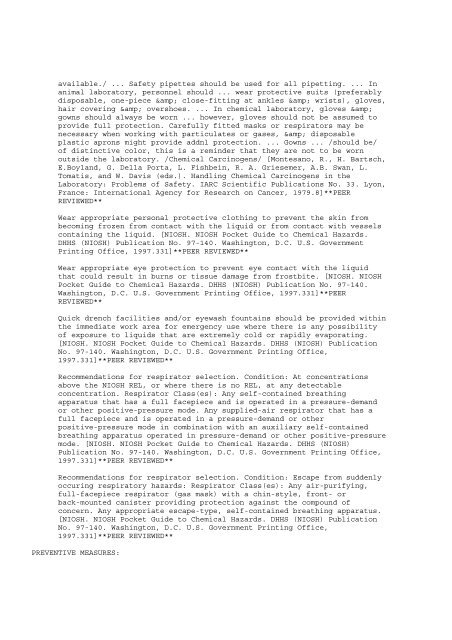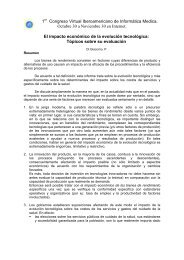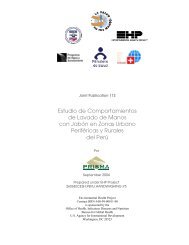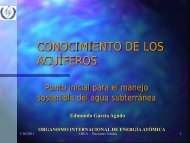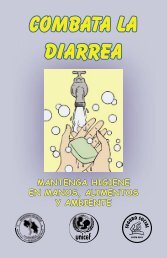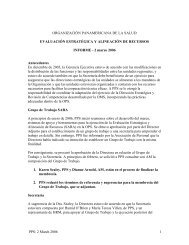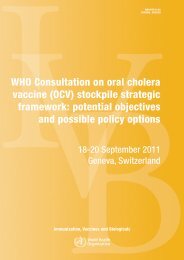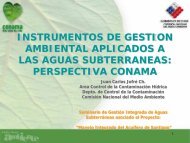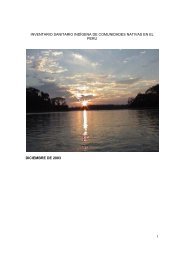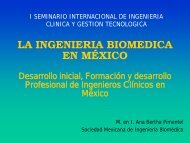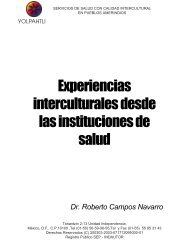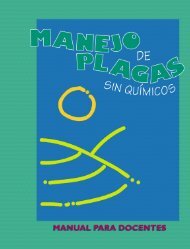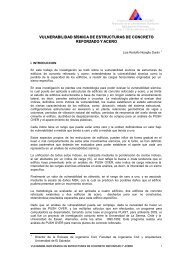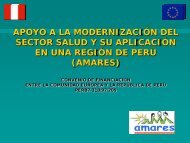air. Vinyl chloride is a gas which is heavier than air. When exposed tolight it will be degraded within a few days. A technical guide concn <strong>of</strong> 3ml/m3 air has been adopted for its cancerogenic potential. Dioxin valuesmeasured in soils & plants were in <strong>the</strong> natural range <strong>of</strong> 20 ng I-TE/kgDS. These values increased to 8300 ng at <strong>the</strong> very seat <strong>of</strong> <strong>the</strong> fire only.With <strong>the</strong> water used for fire fighting vinyl chloride penetrated into <strong>the</strong>groundwater revealing values <strong>of</strong> up to 73 mg/litre. A total <strong>of</strong> 292 urinesamples taken from patients & members <strong>of</strong> <strong>the</strong> rescue forces, residents& a control group were tested for <strong>the</strong>ir contents <strong>of</strong> <strong>the</strong> VC metabolitethiodiacetic acid. However, this number does not allow to draw anyconclusions with regard to a potential incr in <strong>the</strong> risk <strong>of</strong> cancer. With0.27, 0.43 and 0.37 mg/litre <strong>of</strong> urine, <strong>the</strong> mean values are in <strong>the</strong> normalrange for unexposed people. Only 3 cases showing values <strong>of</strong> up to 3.1mg/litre indicated that a real exposure had taken place. The environmental& health authorities have evaluated <strong>the</strong> results <strong>of</strong> <strong>the</strong> measurements atsite. [Thriene B et al; Gesundheitswesen 62 (1): 34-38 (2000)]**PEERREVIEWED**IMMEDIATELY DANGEROUS TO LIFE OR HEALTH:NIOSH considers vinyl chloride to be a potential occupational carcinogen.[NIOSH. NIOSH Pocket Guide to Chemical Hazards. DHHS (NIOSH) PublicationNo. 97-140. Washington, D.C. U.S. Government Printing Office,1997.330]**PEER REVIEWED**PROTECTIVE EQUIPMENT & CLOTHING:/WEAR/ RUBBER GLOVES AND SHOES, GAS-TIGHT GOGGLES, ORGANIC VAPOR CANISTEROR SELF-CONTAINED BREATHING APPARATUS. [U.S. Coast Guard, Department <strong>of</strong>Transportation. CHRIS - Hazardous Chemical Data. Volume II. Washington,D.C.: U.S. Government Printing Office, 1984-5.]**PEER REVIEWED**Respiratory protection is as follows for <strong>the</strong> following concentrations <strong>of</strong>vinyl chloride: Not over 10 ppm: Combination type C supplied-airrespirator, demand type, with half facepiece, and auxillary self-containedbreathing air supply, or type C supplied air respirator, demand type, withhalf facepiece, or any chemical cartridge respirator with an organic vaporcartridge which provides a service life <strong>of</strong> at least 1 hr forconcentrations up to 10 ppm; Not over 25 ppm: A powered air purifyingrespirator with hood, helmet, full or half facepiece, and a canister whichprovides a service life <strong>of</strong> at least 4 hours for concentrations <strong>of</strong> vinylchloride up to 25 ppm, or gas mask, front- or back-mounted canister whichprovides a service life <strong>of</strong> at least 4 hours for concentrations <strong>of</strong> vinylchloride up to 25 ppm; Not over 100 ppm: Combination type C supplied airrespirator, demand type, with full facepiece, and auxillary self-containedair supply, or open circuit self-contained breathing apparatus with fullfacepiece in demand mode, or type C supplied air respirator, demand type,with full facepiece; Not over 1000 ppm: Combination type supplied airrespirator, continuous flow type with full or half facepiece, andauxillary self-contained air supply; Not over 3600 ppm: Combination type Csupplied air respirator, pressure demand type, with full or halffacepiece, and auxillary self-contained air supply; Unknown, or above 3600ppm: Open circuit, self-contained breathing apparatus, pressure demandtype with a full facepiece. [Mackison, F. W., R. S. Stric<strong>of</strong>f, and L. J.Partridge, Jr. (eds.). NIOSH/OSHA - Occupational Health Guidelines forChemical Hazards. DHHS(NIOSH) Publication No. 81-123 (3 VOLS). Washington,DC: U.S. Government Printing Office, Jan. 1981.5]**PEER REVIEWED**PRECAUTIONS FOR "CARCINOGENS": ... Dispensers <strong>of</strong> liq detergent /should be
available./ ... Safety pipettes should be used for all pipetting. ... Inanimal laboratory, personnel should ... wear protective suits (preferablydisposable, one-piece & close-fitting at ankles & wrists), gloves,hair covering & overshoes. ... In chemical laboratory, gloves &gowns should always be worn ... however, gloves should not be assumed toprovide full protection. Carefully fitted masks or respirators may benecessary when working with particulates or gases, & disposableplastic aprons might provide addnl protection. ... Gowns ... /should be/<strong>of</strong> distinctive color, this is a reminder that <strong>the</strong>y are not to be wornoutside <strong>the</strong> laboratory. /Chemical Carcinogens/ [Montesano, R., H. Bartsch,E.Boyland, G. Della Porta, L. Fishbein, R. A. Griesemer, A.B. Swan, L.Tomatis, and W. Davis (eds.). Handling Chemical Carcinogens in <strong>the</strong>Laboratory: Problems <strong>of</strong> Safety. IARC Scientific Publications No. 33. Lyon,France: International Agency for Research on Cancer, 1979.8]**PEERREVIEWED**Wear appropriate personal protective clothing to prevent <strong>the</strong> skin frombecoming frozen from contact with <strong>the</strong> liquid or from contact with vesselscontaining <strong>the</strong> liquid. [NIOSH. NIOSH Pocket Guide to Chemical Hazards.DHHS (NIOSH) Publication No. 97-140. Washington, D.C. U.S. GovernmentPrinting Office, 1997.331]**PEER REVIEWED**Wear appropriate eye protection to prevent eye contact with <strong>the</strong> liquidthat could result in burns or tissue damage from frostbite. [NIOSH. NIOSHPocket Guide to Chemical Hazards. DHHS (NIOSH) Publication No. 97-140.Washington, D.C. U.S. Government Printing Office, 1997.331]**PEERREVIEWED**Quick drench facilities and/or eyewash fountains should be provided within<strong>the</strong> immediate work area for emergency use where <strong>the</strong>re is any possibility<strong>of</strong> exposure to liquids that are extremely cold or rapidly evaporating.[NIOSH. NIOSH Pocket Guide to Chemical Hazards. DHHS (NIOSH) PublicationNo. 97-140. Washington, D.C. U.S. Government Printing Office,1997.331]**PEER REVIEWED**Recommendations for respirator selection. Condition: At concentrationsabove <strong>the</strong> NIOSH REL, or where <strong>the</strong>re is no REL, at any detectableconcentration. Respirator Class(es): Any self-contained breathingapparatus that has a full facepiece and is operated in a pressure-demandor o<strong>the</strong>r positive-pressure mode. Any supplied-air respirator that has afull facepiece and is operated in a pressure-demand or o<strong>the</strong>rpositive-pressure mode in combination with an auxiliary self-containedbreathing apparatus operated in pressure-demand or o<strong>the</strong>r positive-pressuremode. [NIOSH. NIOSH Pocket Guide to Chemical Hazards. DHHS (NIOSH)Publication No. 97-140. Washington, D.C. U.S. Government Printing Office,1997.331]**PEER REVIEWED**Recommendations for respirator selection. Condition: Escape from suddenlyoccuring respiratory hazards: Respirator Class(es): Any air-purifying,full-facepiece respirator (gas mask) with a chin-style, front- orback-mounted canister providing protection against <strong>the</strong> compound <strong>of</strong>concern. Any appropriate escape-type, self-contained breathing apparatus.[NIOSH. NIOSH Pocket Guide to Chemical Hazards. DHHS (NIOSH) PublicationNo. 97-140. Washington, D.C. U.S. Government Printing Office,1997.331]**PEER REVIEWED**PREVENTIVE MEASURES:


